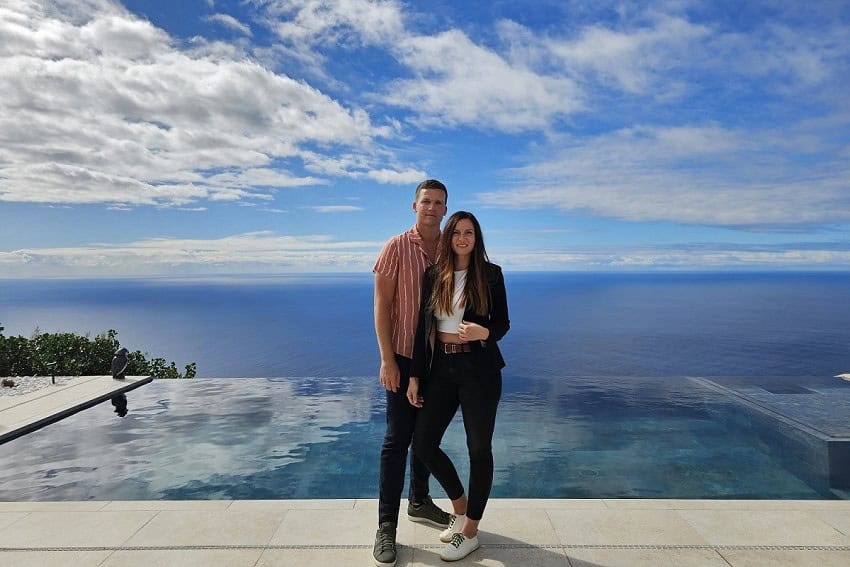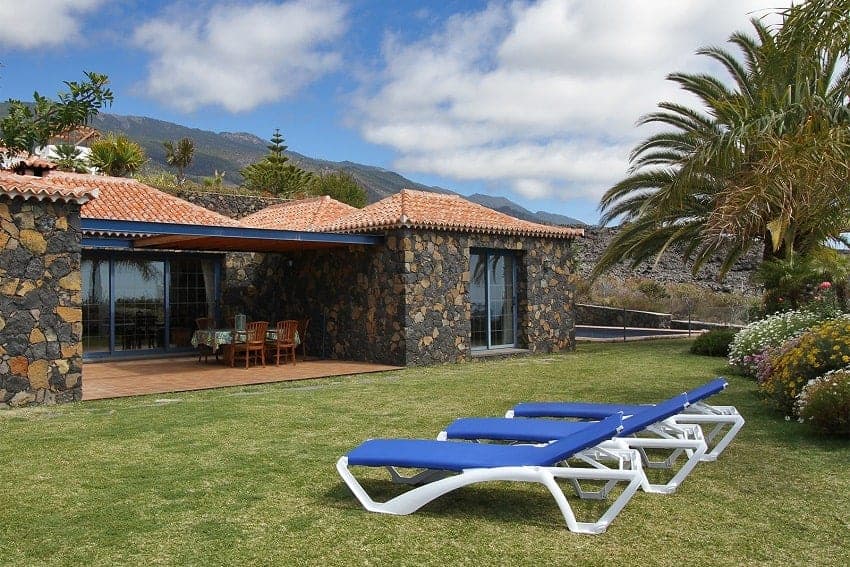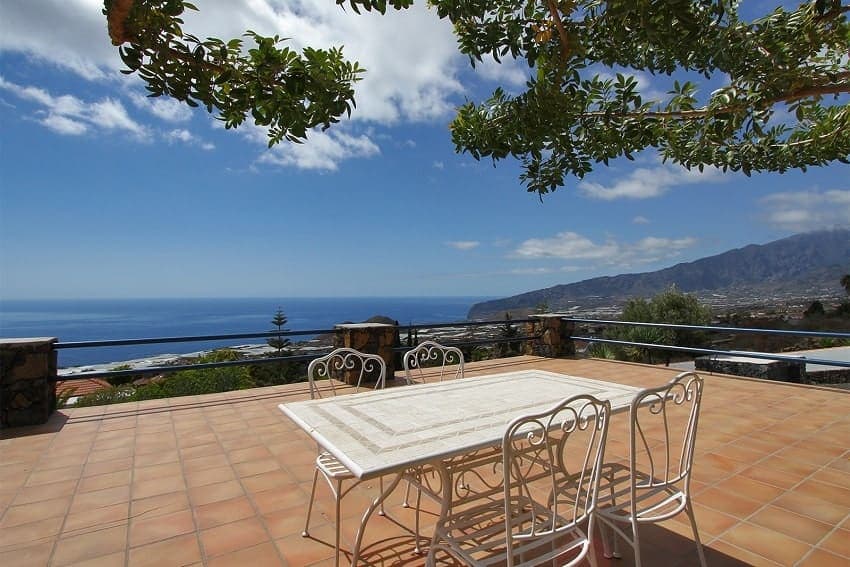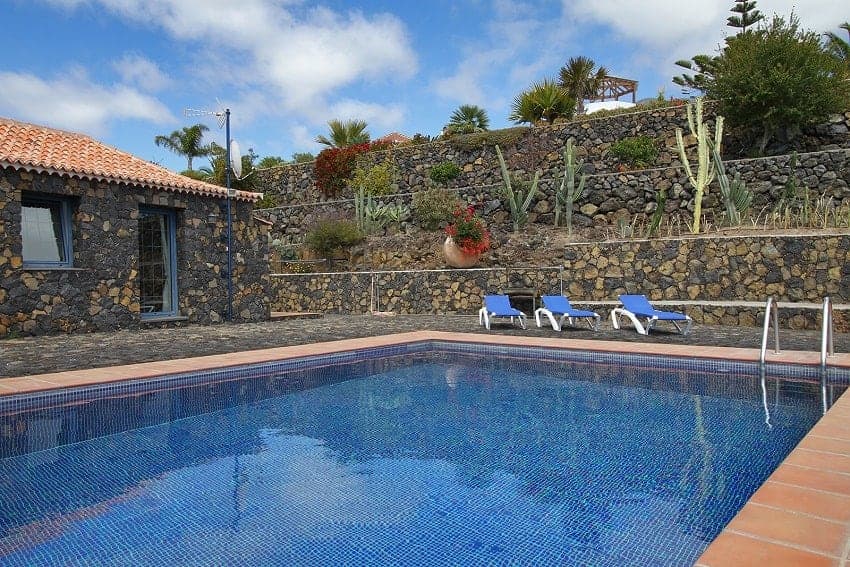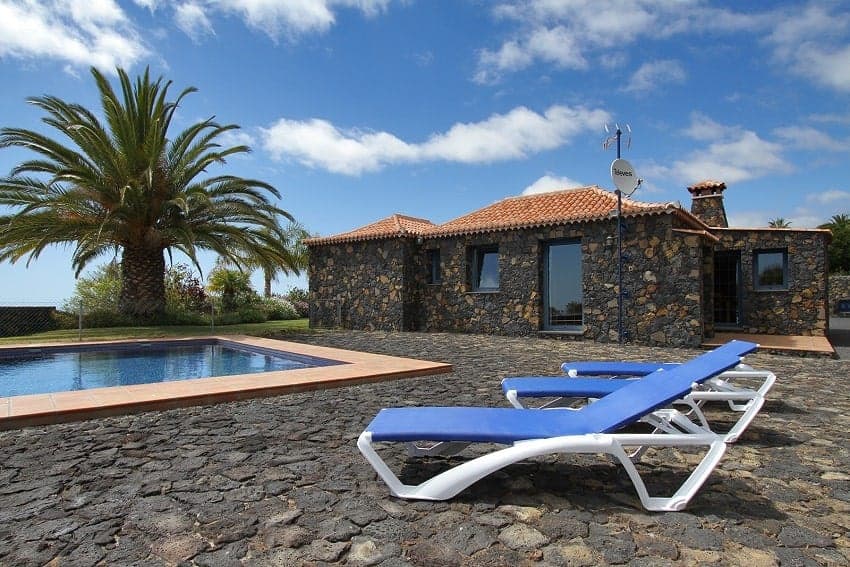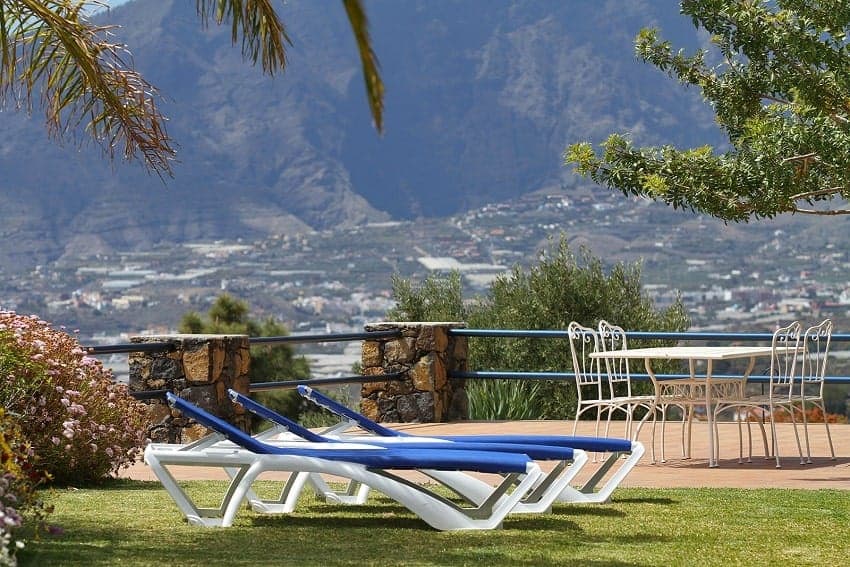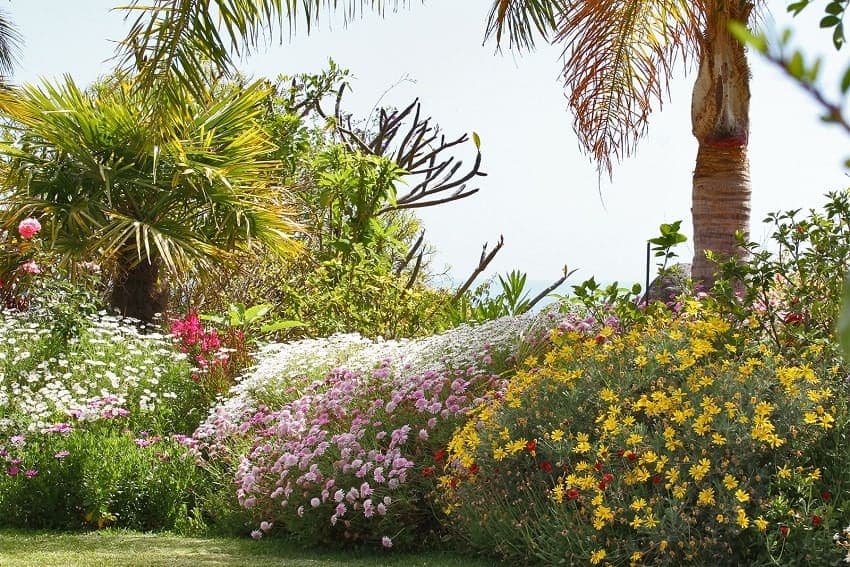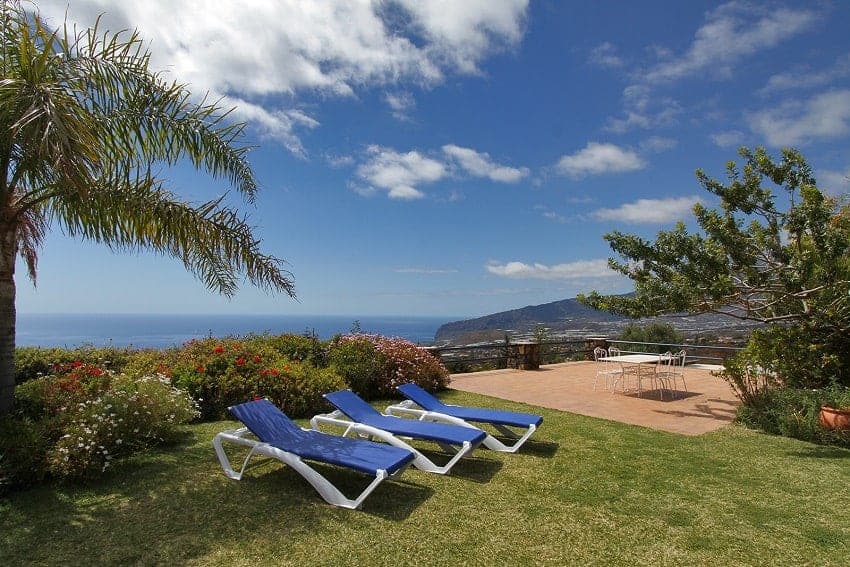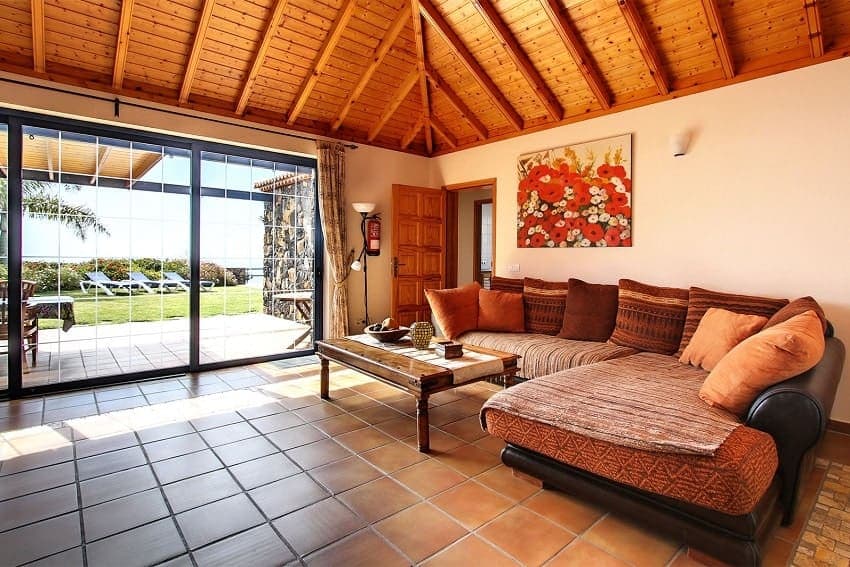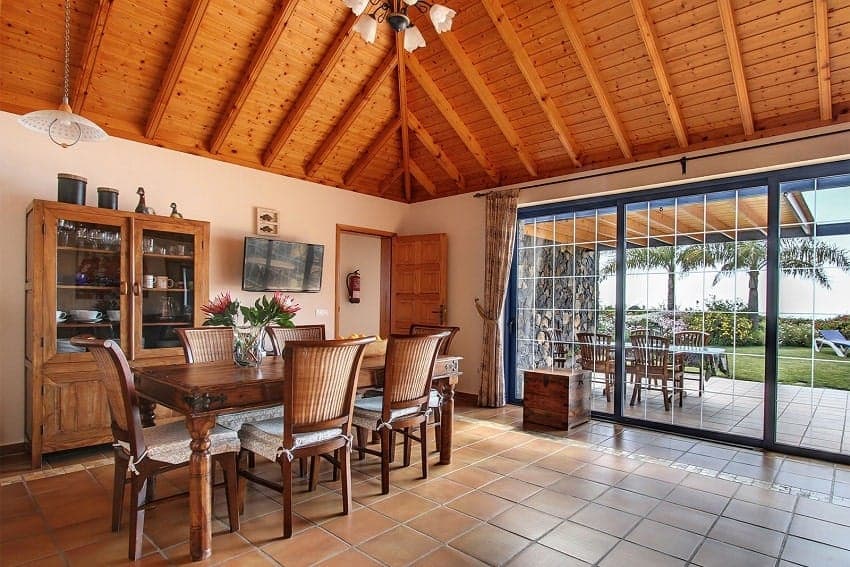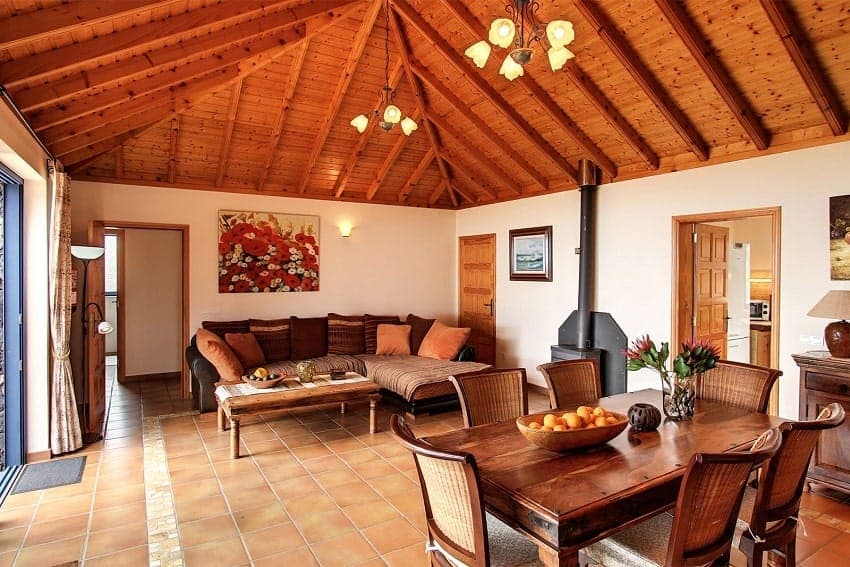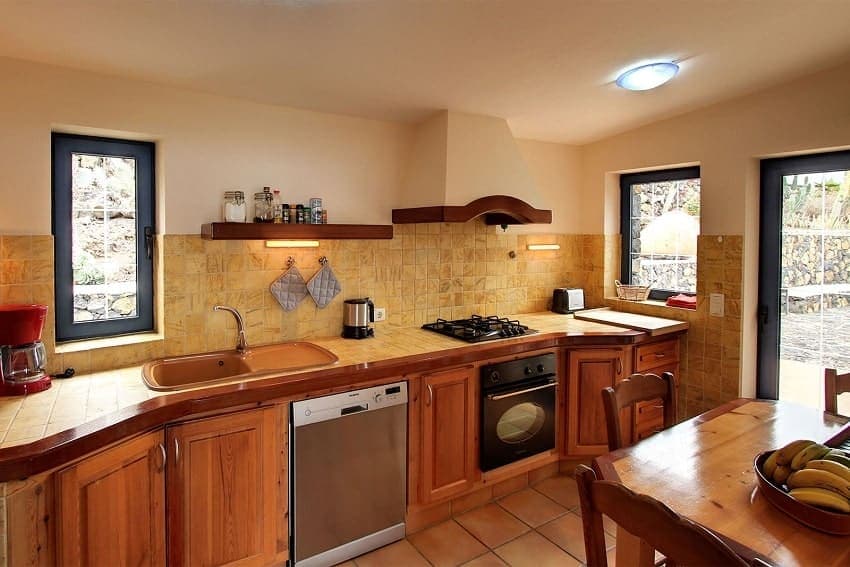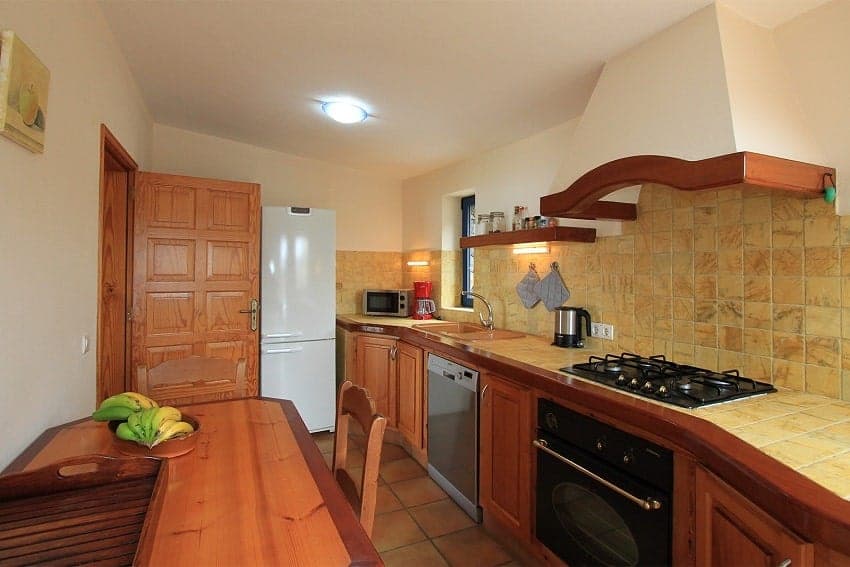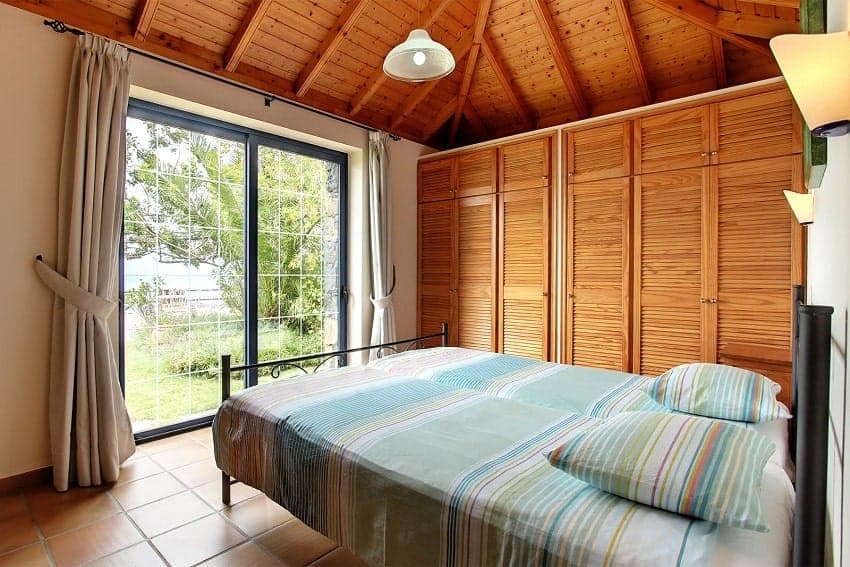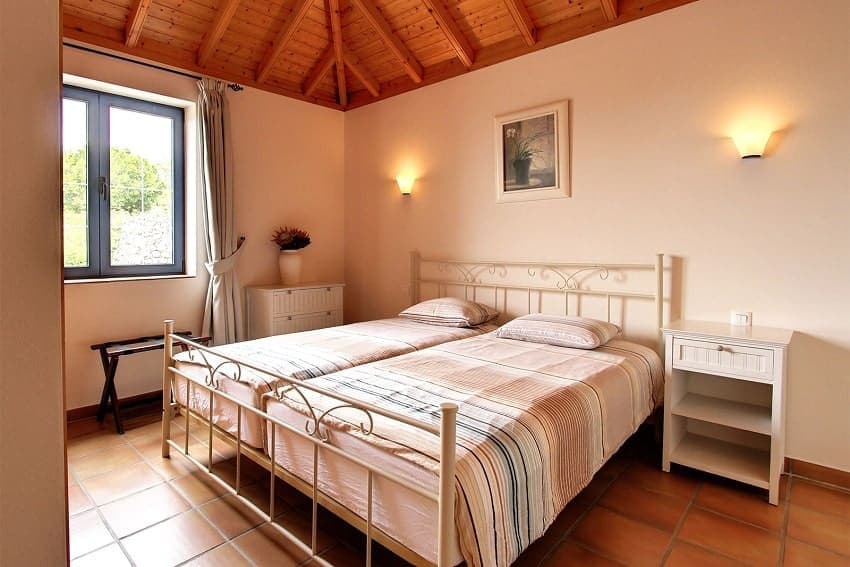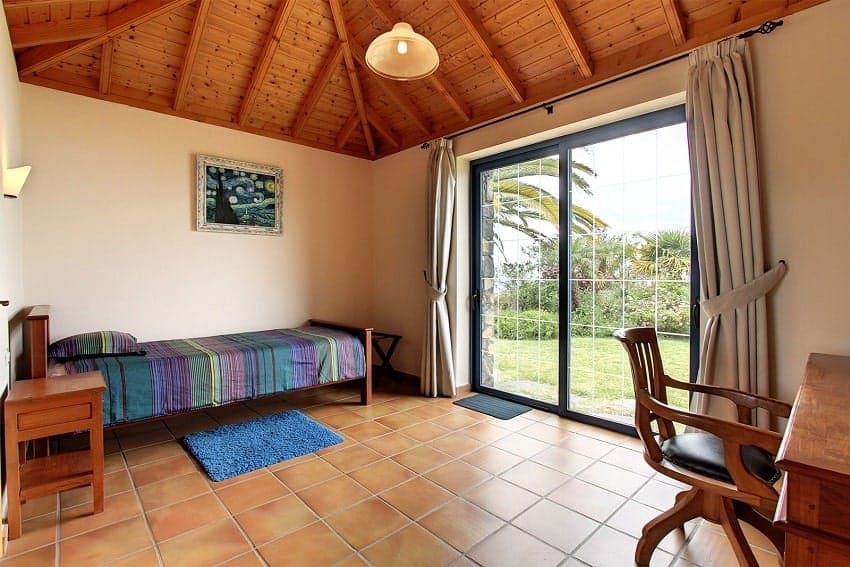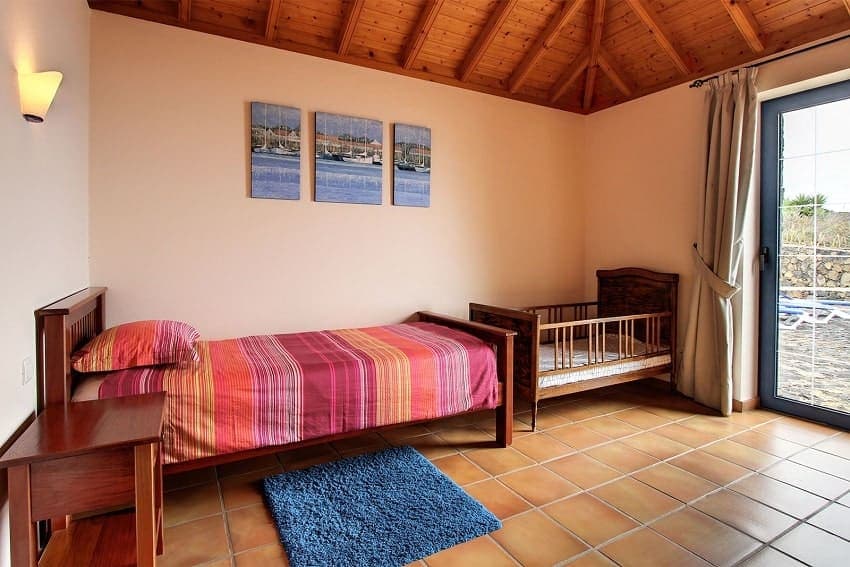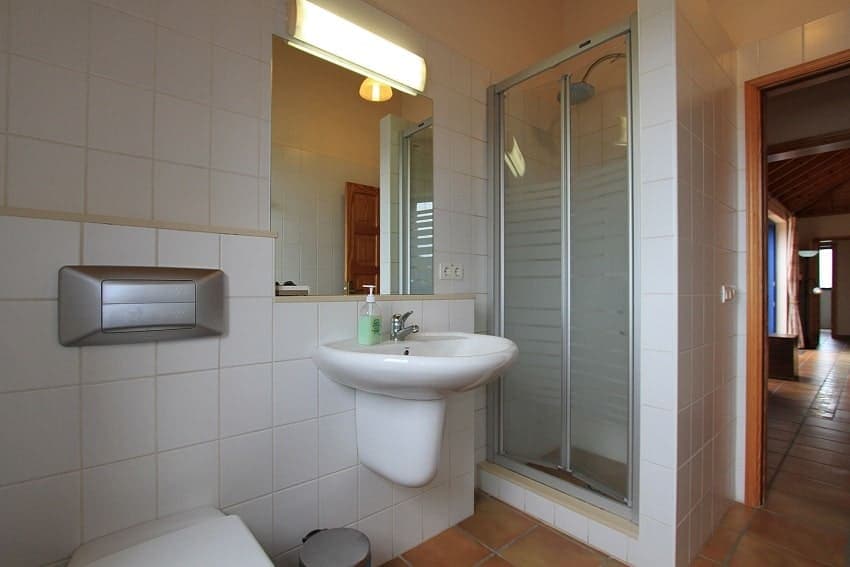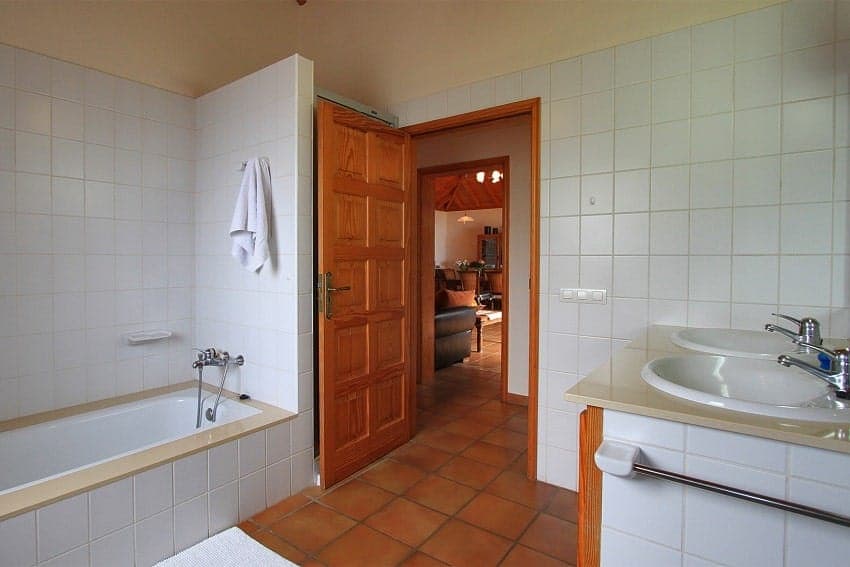Availability
Casa Amalia
 1
1  4 2
4 2 







Casa Amalia is a beautiful holiday house on La Palma with private pool, situated in Todoque next to one of the island’s best-preserved black lava flows.
This holiday house on La Palma with private pool features a natural stone facade that blends seamlessly into the surrounding landscape, creating a harmonious atmosphere.
Casa Amalia sits on a 5.000 m² plot at around 500 m above sea level. Moreover, this holiday house can comfortably accommodate up to 6 people. Its warm colors and wooden materials create a cosy and inviting ambiance. The living room connects directly to a fully equipped kitchen.
The holiday house offers approximately 150 m² of living space. It includes two double bedrooms, two single bedrooms, and two bathrooms. This layout makes it ideal for families or groups. Guests can enjoy both comfort and privacy during their stay on La Palma.
The outdoor area invites relaxation, offering plenty of seating and lounging options. In addition, a spacious covered terrace with a dining area is located right in front of the living room. This spot perfectly suits an indulgent breakfast or evening meals. For breathtaking views, the panoramic terrace overlooks the sea and the Aridane Valley, offering guests a spectacular setting.
Of course, the highlight is the private pool measuring 6.4 by 5.1 meters. Whether you want to cool off after a day of exploring or swim a few lengths, the pool is perfect for refreshing relaxation.
Casa Amalia has a central location. It offers easy access to Los Llanos de Aridane, several beautiful beaches, majestic mountains and the famous national park. Consequently, this holiday house with private pool is truly an ideal base for an eventful yet peaceful holiday on La Palma. If you love outdoor adventures, don’t miss our detailed blog article about the best hiking trails on La Palma.
Facilities
- 2 Bathrooms
- 2 Double Bedrooms
- 2 Double Beds with Single Mattresses
- 2 Single Bedrooms
- 2 Single Beds 90x200
- Baby Cot
- Bathtub
- Bed Linen & Towels are Provided
- Bidet
- Chimney
- Coffee Maker
- Covered Terrace
- Dishwasher
- Electric Heating
- Electric Kettle
- Fridge / Freezer
- Garden
- Gas Stove
- Grill
- Hair Dryer
- High Chair
- Internet - WiFi
- Iron
- Kitchen
- Living Room with Integrated Dining Room
- Microwave
- Oven
- Parking Space
- Private Swimming Pool
- Safe
- Salt Water Pool
- SAT-TV
- Sofa
- Sunbeds
- Terrace
- Toaster
- Washing Machine
- Weekly Linen & Towel Change
Internet
Location and Distances
Medical help
Check In / Check Out
Payment / Cancellation
Additional information
Accommodation review scores and score breakdown
Based on 2 reviews
Guest reviews are written by customers after their stay at Casa Amalia.
Guest reviews
-
22.08.2024
Sehr schönes Ferienhaus in außergewöhnlicher Lage. Schöner Pool, schöner Blick auf den neuen Vulkan. Guter aufmerksamer Gastgeber. Die Lage ist etwas abgelegen, aber leicht zu erreichen.
-
26.02.2024
Wir waren mit unserer großen Familie in dem wunderbaren Haus von Steffen. Perfekt geschnitten, sodass man abends zusammen sitzen konnte und zum Schlafen aber jeder seine Ruhe hat. Das Haus ist perfekt zwischen den Städte, man ist zwar auf ein Auto angewiesen, aber das braucht es auf La Palma eh. Wir kommen jederzeit wieder.
La Palma
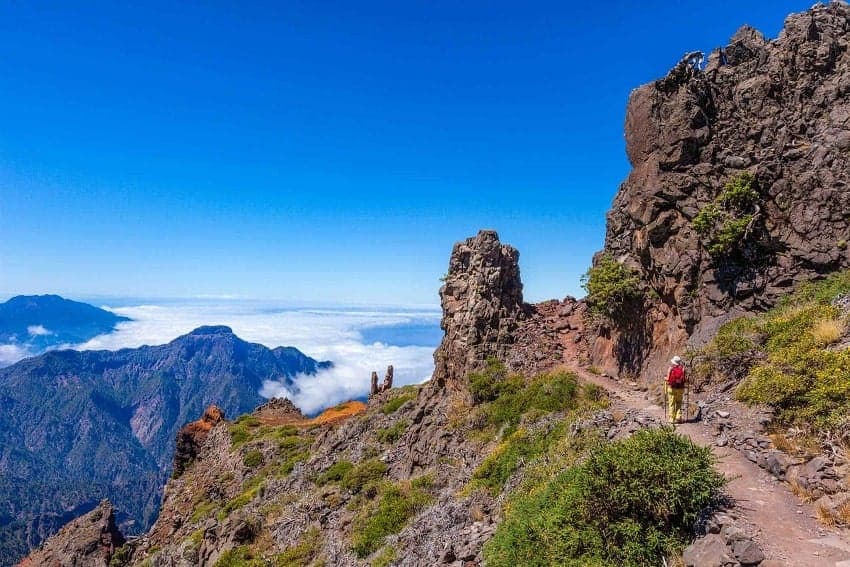
The island of La Palma offers breathtaking landscapes, remote beaches, imposing volcanoes, dense forests and incomparably starry skies.
With its 708 square kilometres, an elevation of 2.426m and its shape of a heart it is the most Western island of the Canary Island chain. Like every island in this archipelago, La Palma was created by volcanic activity. It is one of the youngest of the seven islands, dating back some 1.7 million years. The volcanic origin of La Palma is still clearly recognizable today, especially the southern part of the island with the dormant volcano Teneguía which last erupted in 1971, and offers interesting insights into its geological past.
The year-round mild climate with average temperatures between 18 and 27 degrees Celsius produce spring-summerlike weather as a result of the northeast trade winds.
This weather phenomenon is responsible for a pleasant subtropical climate and a rich green vegetation that prevails because of the humidity carried along in the trade winds. These moisture rich winds at certain times of the year also create a spectacular waterfall of clouds cascading down the central mountain faces and hence the nicknames Isla Verde – Green Island and Isla Bonita – Beautiful Island.
The unique geological structure of the island with its variety of vegetation zones and microclimates that are rarely found in the world on such a small area make this island a miniature universe. Each area of the island varies completely from another. In 1983 La Palma was declared a UNESCO biosphere reserve.
Another special feature of La Palma is the unique night sky. Due to its location in the Atlantic Ocean, sparse population, minimum light pollution and highest mountain peak Roque de los Muchachos 2.426m, the island was chosen as the location for one of the largest and modern observatories in the world.
The official population of the island is approximately 80,000 people. Traditional festivals such as the Bajada de la Virgen or Los Indianos carnival, famous far beyond the island’s borders, bear witness to the zest for life of the local people (Palmeros). Not only the geographical location, but also the numerous immigrants from Central and South America show a variety of Hispanic influences in island life, cuisine and cultural.
Read more...

